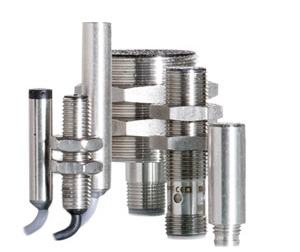 Integrating sensors in washdown applications can be confusing when considering the various approvals. So what do they all mean? If a sensor is an IP69K rated sensor does that mean it will survive everything? In the world of sensors there is IP54, IP67, IP68 and IP69 so if my sensor is IP69K that means it is the best right? The short answer is no. Let’s take a brief look at the differences.
Integrating sensors in washdown applications can be confusing when considering the various approvals. So what do they all mean? If a sensor is an IP69K rated sensor does that mean it will survive everything? In the world of sensors there is IP54, IP67, IP68 and IP69 so if my sensor is IP69K that means it is the best right? The short answer is no. Let’s take a brief look at the differences.
IP ratings will generally have two digits with the first digit referring to the solid particle protection. The second digit indicates the level of protection against the ingress of water.
Sensors rated for IP54 indicates they are dust protected, meaning that dust can get inside the sensor, however, it cannot be enough to interfere with the operation of the equipment – this is designated by the 5. The 4 indicates that the sensor withstands splashing water on the housing from any direction with no detrimental effect. The test for the splashing of water lasts at least five minutes with a water volume of 2.64 gallons per minute with a pressure of 7.25 to 21.76 PSI.
IP67 rated sensors are the most commonly used sensors on the market. Even most electrical enclosures used in automation are IP67 rated. The 6 indicates these devices will not allow the entry of dust. The 7 indicates that the sensor can be immersed in water to a depth of 1 meter for 30 minutes.
IP68 rated sensors are dust tight sensors that can be immersed in water continuously under conditions specified by the manufacturer. Typically the depth of the immersion is 3 meters.
The IP69K rating is based on a dust tight sensor that can withstand high pressure sprays. The devices are sprayed with a pressure of 1,160 to 1,450 PSI. The water temperature can be as high as 176°F with a flow rate of 3.7 to 4.2 gallons per minute. The distance from the nozzle to the device is 4 to 6 inches. The sensor is placed on a rotary table that rotates at 5 revolutions per minute and the sensor is sprayed for 30 seconds at four angles 0°, 30°, 60°, and 90°.
The ultimate sensor would have a rating of IP67/IP68/IP69 indicating that it will survive submersion and high pressure washdown. Also, some of these sensors are 316L stainless meaning they have low carbon content and are more corrosion resistant than other stainless steel grades. Are all IP69K sensors stainless steel? No, some sensors utilize polycarbonate-ABS thermoplastic.
Usually during washdown applications in the food and beverage industry the spray is not just water but some sort of cleaning chemical or disinfectant. These aggressive cleaning and disinfecting agents can attack different housing materials. This is addressed by the ECOLAB certification.
The ECOLAB test consists of testing the housing and sensor materials to exposure to these aggressive cleaning and disinfecting agents. The devices are tested for 14 to 28 days at a room temperature of 68° F. During this time the sensor is visually inspected for swelling, embrittlement, or changes in color.
Don’t forget that even though the sensor has the correct IP rating for your application that the mating connector has to meet the same specifications. For example, if the sensor is IP69K rated and a IP67 mating cable is used then the lower IP rating has precedence.
If you are interested in what sensors and cables meet washdown requirements, please visit www.balluff.us.

